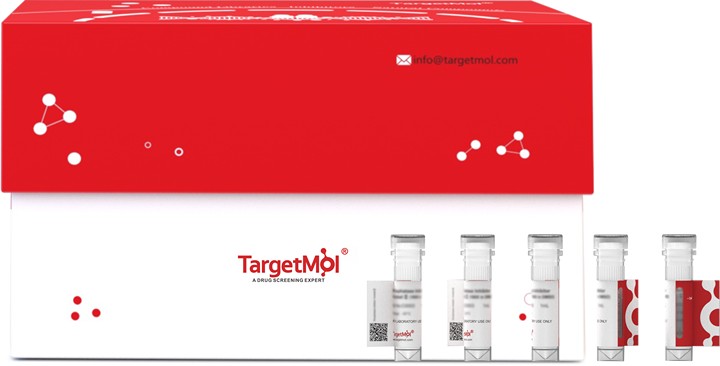Shopping Cart
Remove All Your shopping cart is currently empty
Your shopping cart is currently empty
PARP9 Protein, Human, Recombinant (His & Myc) is expressed in HEK293.

| Pack Size | Price | USA Warehouse | Global Warehouse | Quantity |
|---|---|---|---|---|
| 5 μg | $219 | 20 days | 20 days | |
| 10 μg | $365 | 20 days | 20 days | |
| 20 μg | $613 | 20 days | 20 days | |
| 50 μg | $1,160 | 20 days | 20 days | |
| 100 μg | $1,890 | 20 days | 20 days | |
| 200 μg | $2,890 | 20 days | 20 days | |
| 500 μg | $5,160 | 20 days | 20 days | |
| 1 mg | $7,960 | 20 days | 20 days |
| Biological Activity | Activity has not been tested. It is theoretically active, but we cannot guarantee it. If you require protein activity, we recommend choosing the eukaryotic expression version first. |
| Description | PARP9 Protein, Human, Recombinant (His & Myc) is expressed in HEK293. |
| Species | Human |
| Expression System | HEK293 Cells |
| Tag | N-10xHis, C-Myc |
| Accession Number | Q8IXQ6 |
| Synonyms | Protein mono-ADP-ribosyltransferase PARP9,Poly [ADP-ribose] polymerase 9 (PARP-9),PARP9,BAL1,BAL,B aggressive lymphoma protein,ADP-ribosyltransferase diphtheria toxin-like 9 (ARTD9) |
| Amino Acid | IQQQKTQDEMKENIIFLKCPVPPTQELLDQKKQFEKCGLQVLKVEKIDNEVLMAAFQRKKKMMEEKLHRQPVSHRLFQQVPYQFCNVVCRVGFQRMYSTPCDPKYGAGIYFTKNLKNLAEKAKKISAADKLIYVFEAEVLTGFFCQGHPLNIVPPPLSPGAIDGHDSVVDNVSSPETFVIFSGMQAIPQYLWTCTQEYVQSQDYSSGPMRPFAQHPWRGFASGSPVD |
| Construction | 628-854 aa |
| Protein Purity | > 85% as determined by SDS-PAGE. |
| Molecular Weight | 30.9 kDa (predicted) |
| Endotoxin | < 1.0 EU/μg of the protein as determined by the LAL method. |
| Formulation | If the delivery form is liquid, the default storage buffer is Tris/PBS-based buffer, 5%-50% glycerol. If the delivery form is lyophilized powder, the buffer before lyophilization is Tris/PBS-based buffer, 6% Trehalose, pH 8.0. |
| Reconstitution | Reconstitute the lyophilized protein in sterile deionized water. The product concentration should not be less than 100 μg/mL. Before opening, centrifuge the tube to collect powder at the bottom. After adding the reconstitution buffer, avoid vortexing or pipetting for mixing. |
| Stability & Storage | Lyophilized powders can be stably stored for over 12 months, while liquid products can be stored for 6-12 months at -80°C. For reconstituted protein solutions, the solution can be stored at -20°C to -80°C for at least 3 months. Please avoid multiple freeze-thaw cycles and store products in aliquots. |
| Shipping | In general, Lyophilized powders are shipping with blue ice. Solutions are shipping with dry ice. |
| Research Background | ADP-ribosyltransferase which, in association with E3 ligase DTX3L, plays a role in DNA damage repair and in immune responses including interferon-mediated antiviral defenses. Within the complex, enhances DTX3L E3 ligase activity which is further enhanced by PARP9 binding to poly(ADP-ribose). In association with DTX3L and in presence of E1 and E2 enzymes, mediates NAD(+)-dependent mono-ADP-ribosylation of ubiquitin which prevents ubiquitin conjugation to substrates such as histones. During DNA repair, PARP1 recruits PARP9/BAL1-DTX3L complex to DNA damage sites via PARP9 binding to ribosylated PARP1. Subsequent PARP1-dependent PARP9/BAL1-DTX3L-mediated ubiquitination promotes the rapid and specific recruitment of 53BP1/TP53BP1, UIMC1/RAP80, and BRCA1 to DNA damage sites. In response to DNA damage, PARP9-DTX3L complex is required for efficient non-homologous end joining (NHEJ); the complex function is negatively modulated by PARP9 activity. Dispensable for B-cell receptor (BCR) assembly through V(D)J recombination and class switch recombination (CSR). In macrophages, positively regulates pro-inflammatory cytokines production in response to IFNG stimulation by suppressing PARP14-mediated STAT1 ADP-ribosylation and thus promoting STAT1 phosphorylation. Also suppresses PARP14-mediated STAT6 ADP-ribosylation. |
| Size | Quantity | Unit Price | Amount | Operation |
|---|

Copyright © 2015-2026 TargetMol Chemicals Inc. All Rights Reserved.